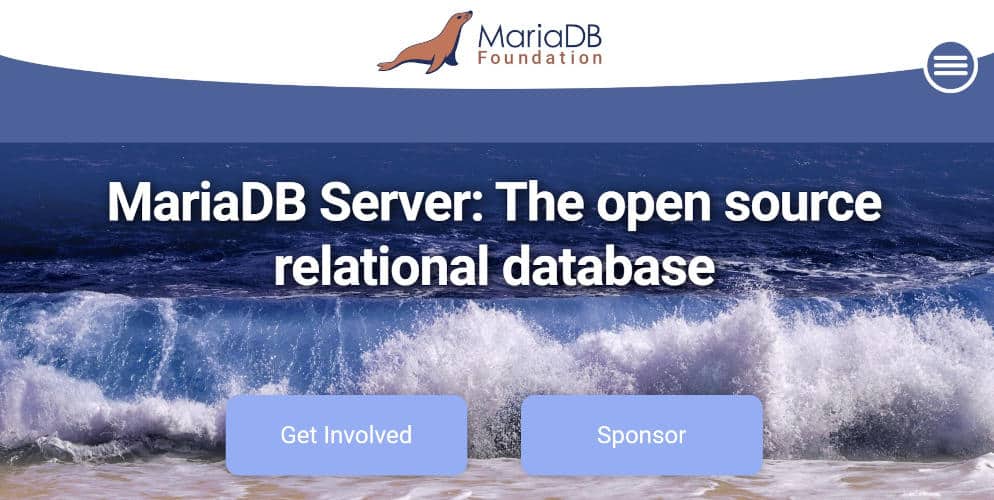To store, manage and organize their structured data, organizations need a high-performance database management system. And to say the least, they're spoilt for choice with all the offerings available on the market.
In this article, we’ll be looking specifically at two RDBMSs, MariaDB and PostgreSQL. So what are the differences and similarities between these two tools? Which one should you choose? And in what cases? That’s what we’re going to find out in this article.
What is MariaDB?
MariaDB is an open source relational database management system (RDBMS). It is presented as a compatible alternative to MySQL. It was created by the community and developers involved in MySQL, following its acquisition by Oracle Corporation. It is therefore possible to use applications and scripts written for MySQL, without making any major changes.
But beyond its compatibility, MariaDB has also improved its performance compared with MySQL.
Not least by adding new, advanced features. For example, alternative storage engines, verification constraints, optimizations for complex queries and improvements in index management.
The storage engine is one of MariaDB’s special features. In addition to the default engine (InnoDB), MariaDB comes with other storage engines, such as Aria, TokuDB and FederatedX. This allows you to meet the specific needs of your database.

What is PostgreSQL?
Developed at the University of California at Berkeley in 1986, PostgreSQL is an open source RDBMS. In other words, it uses a predefined structure to store your data. Above all, it is one of the most highly regarded object-oriented relational database management systems.
And with good reason: it guarantees its users optimal power, robustness, extensibility and compliance with SQL standards such as:
- Robustness: PostgreSQL supports ACID (Atomicity, Consistency, Isolation, Durability) transactions. This guarantees data integrity even in the event of system failure.
- Extensibility: with this tool, developers can create custom data types (including arrays, spatial geometries and hashes), functions, operators and programming languages.
- Compliance: it closely follows SQL language specifications. This means you can reproduce all (or almost all) SQL queries.
- Power: in addition to basic SQL functionality, PostgreSQL offers a number of advanced features, such as materialized views and partial indexes. Materialized views enable you to extend virtual views to physical views, for better storage and updating of complex queries. Partial indexes allow you to use only part of a table, rather than all its rows.
These features make it a flexible tool for managing complex data. It can even be used in a data warehouse.

What are the similarities between MariaDB and PostgreSQL?
Before choosing between MariaDB and PostgreSQL, it’s important to understand their similarities:
- Open source license: both solutions are distributed under open source licenses. This means that developers can use, modify and distribute them freely. What’s more, both are supported by active communities that contribute to the continuous improvement of their performance.
- Transaction management: MariaDB and PostgreSQL support ACID transactions to ensure data integrity.
- Security: both solutions offer advanced security features, such as secure authentication, data encryption and fine-grained privilege management.
- Availability: with both MariaDB and PostgreSQL, you have a solution for synchronized replication, ensuring optimum availability.
- GIS extensions: both systems offer extensions for geospatial operations.
💡Related articles:
What are the differences between MariaDB and PostgreSQL?
Despite the aforementioned similarities, MariaDB and PostgreSQL also have some notable differences.
- SQL compliance: presenting itself as an alternative to MySQL, MariaDB aims to maintain close compatibility with this database. That said, certain functionalities may differ between the two systems. PostgreSQL, on the other hand, emphasizes compliance with SQL standards. So you can use basic SQL syntax to query your data.
- Performance: PostgreSQL is renowned for its ability to handle complex workloads.
- Advanced features: on the PostgreSQL side, these include materialized views and partial indexes. On the MariaDB side, advanced features include verification constraints and storage engines.
- Transaction management: although both RDBMSs support ACID transactions, PostgreSQL offers finer control over transaction isolation levels.
- Extensions: PostgreSQL offers greater customization in terms of custom data types, functions, operators and programming languages (including PL/Python, PL/Perl…).
- Sequences: PostgreSQL uses sequences to generate unique values, while MariaDB uses auto-increment with IDENTITY columns.
It’s on the basis of all these differences that organizations should choose between MariaDB and PostgreSQL.
When should you use MariaDB or PostgreSQL?
Before choosing between MariaDB and PostgreSQL, it’s vital to take stock of the nature of your company’s needs and the technical expertise available.
For small companies with small amounts of relational data, MariaDB is preferable for data fluidity.
On the other hand, for access to complex data, PostgreSQL is the best choice. This solution is used by some of the world’s biggest companies, including Reddit, Uber, Netflix and Instagram.
Whatever the structure you plan to join, training in these two relational database management systems is essential.

Join DataScientest and master RDBMS
MariaDB and PostgreSQL are among the must-have databases. To master them, you need training. At DataScientest, you can do just that. Through our training courses, you’ll learn how to use all the data tools essential to a data scientist, data analyst, data engineer or developer. Come and join us!










